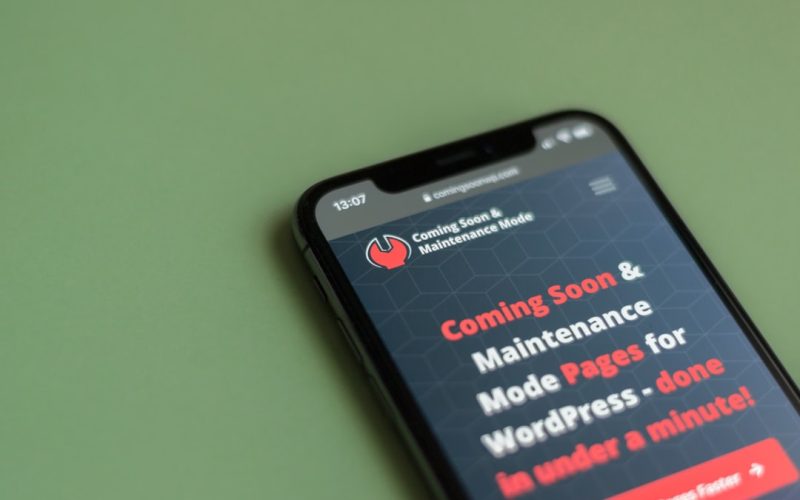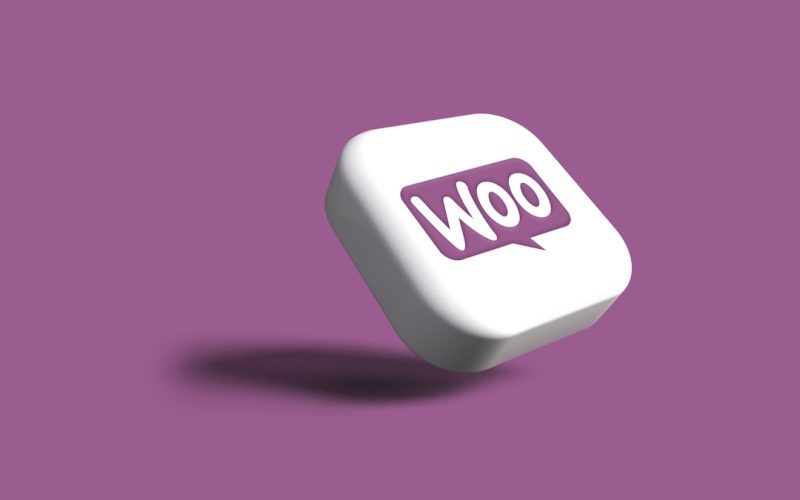When embarking on a project that requires the expertise of a developer, the first step I take is to clearly define my needs and goals. This process involves introspection and a thorough assessment of what I aim to achieve. I ask myself critical questions: What problem am I trying to solve?
What features are essential for my project?
By articulating my objectives, I can create a roadmap that guides my interactions with potential developers.
This clarity not only helps me communicate effectively but also ensures that I remain focused on the end goal throughout the development process.
Moreover, understanding my needs extends beyond just the technical aspects. I consider the user experience and how my project will impact its intended audience. For instance, if I am developing a website, I think about the target demographic and what they would find appealing or useful.
This holistic approach allows me to align my goals with the expectations of my users, ultimately leading to a more successful outcome. By taking the time to reflect on my needs and goals, I set a solid foundation for the subsequent steps in the development process.
Table of Contents
ToggleKey Takeaways
- Clearly define your needs and goals before searching for a developer
- Research potential developers to ensure they have the necessary skills and experience
- Evaluate developer portfolios and experience to determine if they are a good fit for your project
- Consider your budget and pricing options when selecting a developer
- Communication and collaboration are key factors in a successful developer-client relationship
- Review client testimonials and references to gauge the developer’s reputation and work quality
- Set clear expectations and deadlines to ensure the project stays on track
- Finalize the contract and agreement to solidify the terms of the project and protect both parties
Researching Potential Developers
Once I have a clear understanding of my needs and goals, the next step is to research potential developers. This phase is crucial, as it involves gathering information about various candidates who could bring my vision to life. I start by exploring online platforms, such as freelance websites and development agencies, where I can find profiles of developers along with their portfolios.
I pay close attention to their areas of expertise, as well as their previous projects, to ensure they align with my requirements. In addition to online research, I also tap into my network for recommendations. Speaking with colleagues or friends who have previously worked with developers can provide valuable insights.
Personal referrals often come with a level of trust that online reviews may lack. By combining both online research and personal recommendations, I create a shortlist of potential developers who seem capable of meeting my project’s demands.
Evaluating Developer Portfolios and Experience

With a list of potential developers in hand, I turn my attention to evaluating their portfolios and experience. A developer’s portfolio serves as a window into their capabilities and style, allowing me to gauge whether they are a good fit for my project. I look for diversity in their work, as this indicates versatility and adaptability. Projects that showcase creativity and problem-solving skills particularly catch my eye, as they suggest that the developer can think outside the box when faced with challenges. Experience is another critical factor in my evaluation process.
I consider how long each developer has been in the industry and whether they have worked on projects similar to mine. A seasoned developer may have encountered various challenges and learned valuable lessons along the way, which can be beneficial for my project. Additionally, I look for any certifications or accolades that may highlight their expertise in specific technologies or methodologies. By thoroughly assessing portfolios and experience, I can make an informed decision about which developer is best suited for my needs.
Considering Budget and Pricing
| Aspect | Metrics |
|---|---|
| Cost | Initial cost, ongoing expenses |
| Pricing Model | Subscription, one-time purchase, usage-based |
| Value for Money | Features, support, scalability |
| Competitive Pricing | Comparison with competitors |
As I narrow down my options, budget considerations come into play. It’s essential for me to establish a realistic budget that reflects the scope of my project while also being mindful of the market rates for development services. I begin by researching typical pricing structures within the industry, which helps me understand what to expect when discussing costs with potential developers.
This knowledge empowers me to negotiate effectively without undervaluing the work involved. When discussing pricing with developers, I ensure that I ask about their payment structures—whether they charge hourly rates or fixed project fees. Additionally, I inquire about any potential extra costs that may arise during the development process.
Transparency is key; I want to avoid any surprises down the line that could derail my budget. By being upfront about my financial constraints while also valuing quality work, I can find a developer who fits within my budget without compromising on the quality of the final product.
Communication and Collaboration
Effective communication is paramount in any successful development project, so I prioritize finding a developer who values collaboration as much as I do. From our initial conversations, I pay attention to how responsive they are to my inquiries and how well they articulate their thoughts. A developer who communicates clearly and promptly sets a positive tone for our working relationship.
I believe that open lines of communication foster trust and ensure that both parties are aligned throughout the project. Collaboration goes beyond just communication; it involves creating an environment where ideas can be shared freely. I look for developers who are open to feedback and willing to engage in discussions about design choices or technical solutions.
This collaborative spirit not only enhances creativity but also allows us to address any issues that may arise during development more effectively. By prioritizing communication and collaboration, I set the stage for a productive partnership that can lead to a successful outcome.
Reviewing Client Testimonials and References

As part of my due diligence, I make it a point to review client testimonials and references for each developer on my shortlist. Testimonials provide insight into the experiences of previous clients, shedding light on aspects such as reliability, quality of work, and overall satisfaction. Positive feedback from past clients can be a strong indicator of a developer’s capabilities and professionalism.
In addition to testimonials, I also consider reaching out directly to references provided by the developer. Speaking with former clients allows me to ask specific questions about their experiences and gain a deeper understanding of what it’s like to work with the developer in question. This step is invaluable; it helps me gauge not only the quality of work but also how well the developer handles challenges and communicates throughout the project lifecycle.
By thoroughly reviewing testimonials and references, I can make a more informed decision about which developer is likely to meet my expectations.
Setting Clear Expectations and Deadlines
Once I’ve selected a developer, setting clear expectations and deadlines becomes crucial for ensuring a smooth workflow. At this stage, I take the time to outline specific deliverables, timelines, and milestones for the project. By establishing these parameters upfront, both the developer and I have a shared understanding of what needs to be accomplished and when.
This clarity helps prevent misunderstandings later on and keeps everyone accountable. I also recognize that flexibility is important in any development process; unexpected challenges may arise that could impact timelines or deliverables. Therefore, while I set clear expectations, I also encourage open dialogue about any potential adjustments that may be necessary along the way.
By fostering an environment where we can discuss changes collaboratively, I ensure that we remain aligned on our goals while adapting to any new circumstances that may arise.
Finalizing the Contract and Agreement
The final step in my journey toward successful collaboration with a developer is finalizing the contract and agreement. This document serves as a formal outline of our partnership, detailing all aspects of the project—from scope and deliverables to payment terms and timelines. It’s essential for me to review this contract carefully to ensure that it accurately reflects our discussions and agreements.
I also make it a point to clarify any legal terms or conditions that may be included in the contract. Understanding these details helps me avoid potential pitfalls down the line. Once both parties are satisfied with the terms outlined in the contract, we proceed with signing it, marking the official start of our collaboration.
With everything in place—from understanding my needs to finalizing agreements—I feel confident moving forward into the development phase, knowing that I’ve laid a solid foundation for success.
If you are considering outsourcing your WordPress development needs in the UK, it is important to know what to look for in a developer. Simon Says Web Design offers SEO services in London for freelancers, which can be a valuable asset when outsourcing your website development. By hiring a skilled SEO freelancer, you can ensure that your website is optimized for search engines and reaches a wider audience. Additionally, Simon Says Web Design specializes in non-profit WordPress websites, providing valuable insights and expertise in creating impactful and user-friendly websites for charitable organizations. To learn more about their services, visit Simon Says Web Design.
FAQs
What is a WordPress developer?
A WordPress developer is a professional who specializes in creating and customizing websites using the WordPress platform. They are skilled in coding, designing, and implementing various features and functionalities within the WordPress framework.
What should I look for when outsourcing a WordPress developer in the UK?
When outsourcing a WordPress developer in the UK, it is important to look for someone with a strong portfolio of WordPress projects, experience with customizing themes and plugins, knowledge of web development best practices, and good communication skills. Additionally, it is beneficial to find a developer who is familiar with SEO and responsive design.
What are the benefits of outsourcing a WordPress developer in the UK?
Outsourcing a WordPress developer in the UK can provide access to a pool of talented professionals with expertise in WordPress development. It can also offer cost savings, as hiring a developer in the UK may be more affordable than hiring locally in some regions. Additionally, outsourcing allows for flexibility in scaling resources based on project needs.
How can I ensure the quality of work when outsourcing a WordPress developer in the UK?
To ensure the quality of work when outsourcing a WordPress developer in the UK, it is important to thoroughly review their portfolio, check client references, and conduct interviews to assess their technical skills and communication abilities. It is also advisable to start with a small project to evaluate the developer’s performance before committing to a larger project.
What are the potential challenges of outsourcing a WordPress developer in the UK?
Some potential challenges of outsourcing a WordPress developer in the UK may include differences in time zones, language barriers, and cultural nuances. It is important to establish clear communication channels and expectations to mitigate these challenges. Additionally, there may be legal and contractual considerations when working with a developer from another country.




